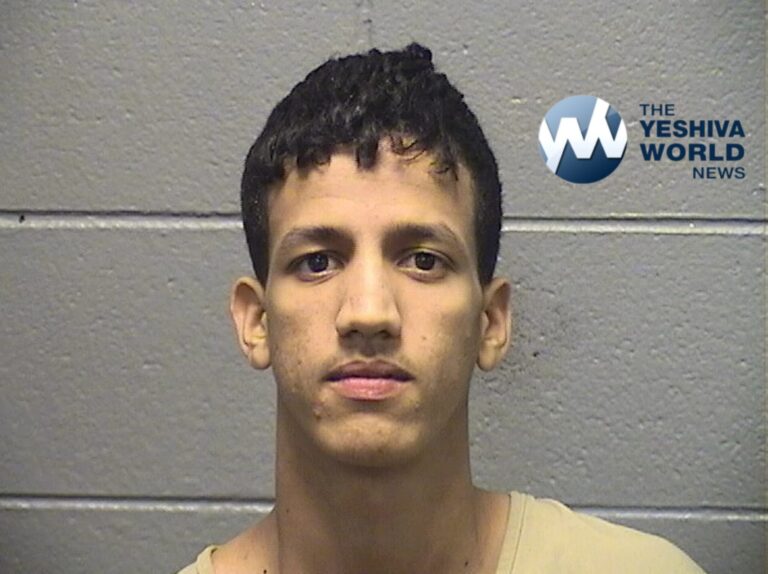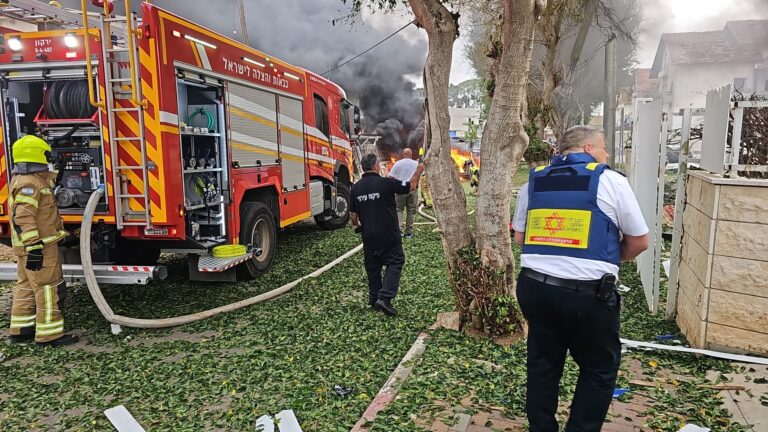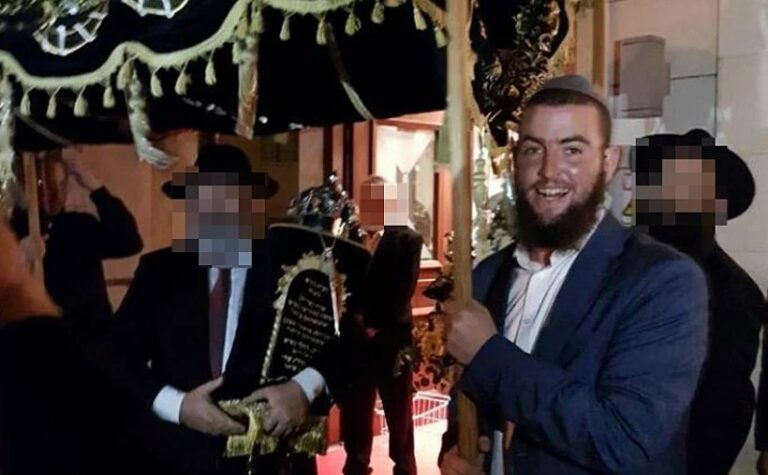By Rav Aryeh Zev Ginzberg
Exactly one year ago, when the calendar page turned to Tu B’Av, an article appeared in Mishpacha and on Yeshiva World News entitled “The Hidden World of Shidduchim.” That article, in today’s vernacular, went viral.
That article focused on one of the terrible gezeiros our generation is facing, with the proliferation of older singles in our communities. We referred to a famous insight from the Maharsha (Shabbos 10a), explaining that one of the questions we will each be asked upon reaching the Olam Ha’emes, “Asakta be’piryah ve’rivyah?” does not mean merely, “Did you have children?” but also, “Did you attempt to help people with shidduchim?”
In that vein, we introduced a “segulah” from the zakein hador, the Rosh HaYeshivah Rav Aharon Leib Steinman, to help resolve this colossal communal tragedy. Chazal have made clear in numerous places that “One who davens for his fellow Jew for something that he himself needs, he will be answered first.” Rav Steinman insightfully notes that when Sarah Imeinu was barren, she decided to give her maidservant Hagar to Avraham Avinu, stating, (Bereishis 16:2): “Ulai ibaneh mimenah — perhaps I will be built from her.” Indeed, it was only after she enabled another person to have a child that she herself merited to have her Yitzchak. Rav Steinman suggested that for those who help someone get married, which would enable that person to have children, it would be a merit to have children of their own.
A year ago, my wife and I were searching for something unique and powerful to do as a zechus for the aliyas neshamah of our beloved daughter Sarala z”l, whose incomparable and infectious simchas hachayim was needed in Shamayim. Upon hearing about this segulah from Rabbi Shlomo Bochner of Bonei Olam, who heard about it from Rav Steinman, our search was over. We established an e-mail address ([email protected]) and invited singles (of all ages) to contact us and be paired with couples affiliated with Bonei Olam who are undergoing costly fertility treatments.
The single provides his or her full Hebrew name (to ensure confidentiality, no last names are required on either end) and they are given the opportunity to assist financially (with no minimum required) to defray some of the costs of the treatments. Ohel Sarala then gives the single the couple’s full Hebrew names and the couple, the single’s name, so they can each daven for the other to find the yeshuah they need.
Our thoughts one year ago were that if we would indeed be zocheh to facilitate even one shidduch or even one baby being born through these matches, it would be a zechus for our Sarala z”l. Hashgachah Elyonah determined that Sarala would not bear biological children of her own, but any child born through Ohel Sarala could be attributed to “her,” as well. And so, Ohel Sarala was formed and launched on these very pages.
Last week, almost one year to the date of the launch of Ohel Sarala, one of our singles happily informed us that she is a kallah — our 22nd single to get engaged after joining Ohel Sarala, which actually represents 44 singles finding their zivug!
On the other end, Bonei Olam informed us that five couples celebrated the birth of babies, and another six are expecting, im yirtzeh Hashem. We inform our singles when we are given updates regarding their couples, and Bonei Olam informs the couples when their single gets engaged.
And our 22 engagements are not the full extent of the success of this program. A woman recently approached me at a chasunah with tears in her eyes, introducing herself by saying that she does not have the words to describe the depth of her and her family’s hakaras hatov to Ohel Sarala. Upon reading last year’s article, she was moved to action, but she did not reach out to Ohel Sarala because she realized that she could put this segulah to work in her immediate family. She had two older single daughters and had not received a shidduch phone call for either one in months. She also has a younger brother who had been married for quite a few years without children. She called a family meeting and matched her daughters with her brother and sister-in-law. Eleven months later, one daughter got married, the other recently got engaged, and her brother is preparing to welcome his first child before Rosh Hashanah. She explained that she had tried for weeks to express her heartfelt thoughts in a letter or e-mail to Ohel Sarala, but couldn’t find the right words. Now that she saw me at that chasunah, she felt the need to express her appreciation.
And we have no idea how many other cases like hers we have not heard about.
There are secondary benefits as well. An older single shared in a painful e-mail that although she has not yet actually found her bashert since joining Ohel Sarala, she has had several shidduchim come up in the months she has been part of the program — this after a five-year drought in which she had not had a date. She wrote that this turn of events has given her chizuk to continue the searching and the confidence that she will meet with success in the near future. How can we even attempt to measure the significance of what this has done for this woman?
One of the families who joined Ohel Sarala and was met with success was planning the upcoming chasunah, and the kallah’s father, a distant relative of Rav Chaim Kanievsky, visited him to request a brachah for the couple. Upon hearing that the family attributes their simchah to Rav Steinman’s segulah, Rav Chaim replied, “Too many people are consumed with pursuing shidduchim for their children by doing hishtadlus on so many fronts, except the most important one: Tefillah.” Rav Chaim quoted his father, the Steipler Gaon, that unless a person fully accepts that Hashem is mezaveig zivugim, and without tefillah, they cannot meet with success. He explained that this is what Rav Steinman’s segulah is all about.
And the same holds true as the couple moves on to building their home.
As the Kedushas Yom Tov was about to escort his son to the chuppah, he pointed out that the Gemara (Succah 2b) says that chuppah is synonymous with succah. What does chuppah have to do with succah?
“Just as a succah expresses our faith in Hashem,” the Kedushas Yom Tov explained, “as we go from our sturdy homes into a flimsy structure to be close to Him, the same is true for going to the chuppah. As you stand under the chuppah, you have to internalize that you cannot rely on me, or on your wife’s family, but only on Hashem. Now is the time to turn all your attention to Him.”
When a leading American gadol heard about the phenomenal success rate of Ohel Sarala, he remarked that he’s not sure if the segulah itself is working, or if it is the merit of it coming from Rav Steinman, through the power of tzaddik gozer v’HaKadosh Baruch Hu mekayeim. Upon further reflection, he added: It has both aspects to it.
The connection often continues past the initial moments of an engagement or birth. One single who joyously notified us that she became a kallah (at age 32) asked — nay, pleaded — to continue davening for “her couple” until she is notified that her tefillos for them have come to fruition, as theirs did for her. (Upon Bonei Olam’s advice, we do advise our chassanim and kallos to continue davening for their couples and the couples continue davening for them, as they are now both davening for the same thing: to build a bayis ne’eman b’Yisrael.)
Another kallah was so grateful to “her couple” for their tefillos on her behalf that she asked to break her anonymity and send them an invitation to her wedding as a personal thanks. The request was relayed to the couple, still anonymous, via Bonei Olam, and they replied that they would be honored to attend her chasunah. They ultimately did not attend — for the best of reasons: The wife was coping with a pregnancy-related health issue.
A dear friend asked whether my wife and I participate in the chasunahs of the Ohel Sarala chassanim and kallos. I sensed his surprise when I said that we don’t, but I explained that to protect the extreme privacy of all involved, even when they send us wedding invitations, we prefer not to take a chance at revealing their identities. While we do not attend, however, we feel in the depth of our souls that our Sarala z”l is present at every vort, chasunah, shalom zachar, Kiddush, and bris of “her children,” those married or born through Ohel Sarala/Bonei Olam.
As I wrote a year ago, we cannot afford to leave any stone unturned to alleviate this gezeirah from our midst. Hopefully, by implementing the segulah of the gadol hador, we can shine a light into the world through Ohel Sarala, and we can be zocheh to continue building new generations in Klal Yisrael, until, in the words of Chazal, “ad sheyichlu neshamos she’baguf,” all souls will be born, ushering in the era of Mashiach — may it be speedily, in our days.











